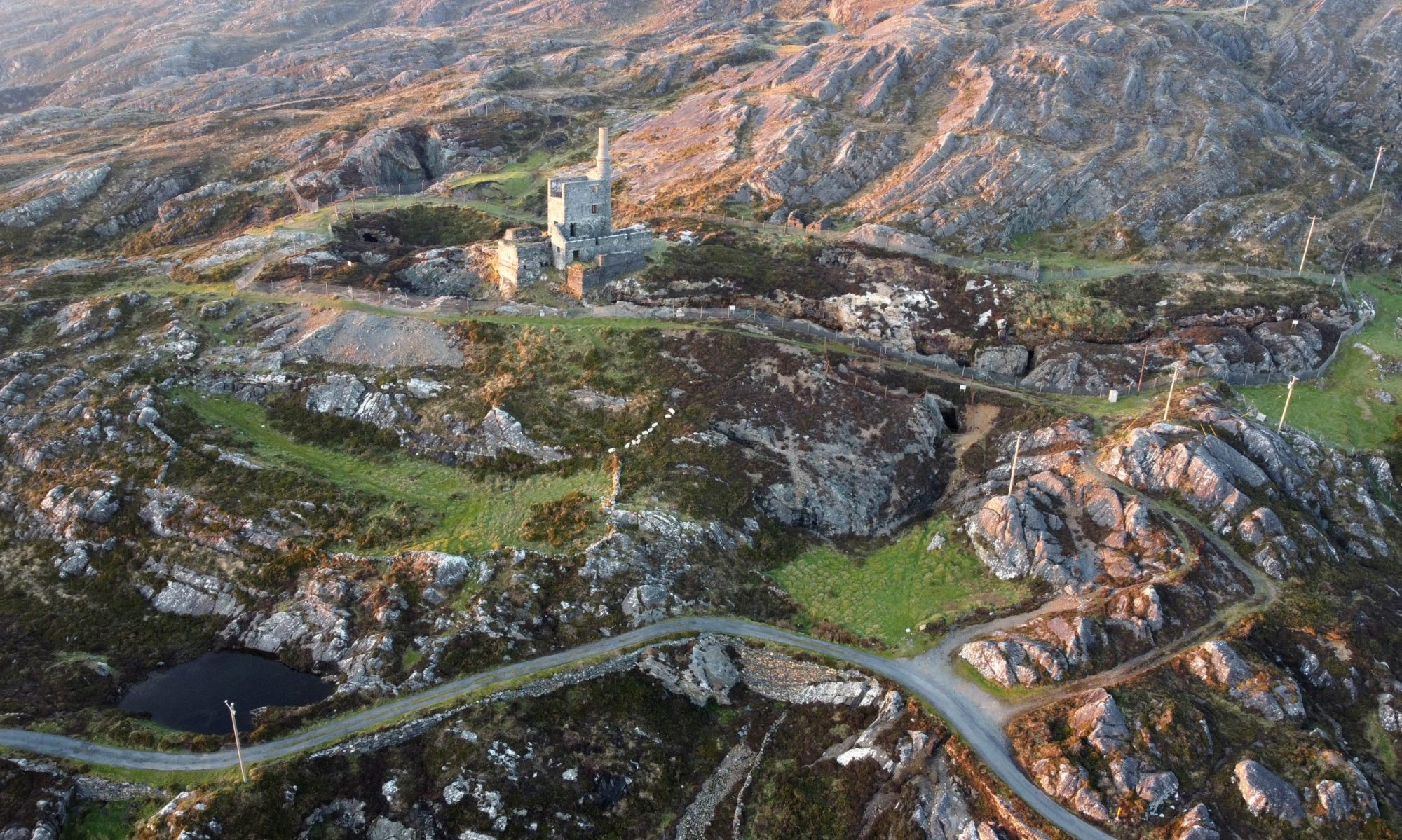COMPANY AND COMMUNITY IN THE 19TH CENTURY
1812 Mining begins at Dooneen.
1813 30 employees. Two barrels of porter where bought for christening of Mountain Mine. In July the first ore was transported to Ballydonegan Bay
1815 300 employees.
1817 Mine captains arm themselves with blunderbusses (guns) in response to a local dispute.
1820 500 employees. Company buys in potatoes to sell at cost to employees after their money loses all value when a bank collapses.
1821 Dunboy Castle first extended.
1822 500 employees. Famine leads to doting in Cork and Kerry and Government restricts gunpowder supply.
1824 The mountain road between Castletown and Allihies is made accessible for horses.
1831 1,000 employees (employment makes the area the quietest part of an otherwise restless nation). Provisions bought in by company.
1832 Cholera comes to the mines and there are several deaths ‑ the miners take fright and stay away.
1833 Dam at Caminches bursts and floods engine shaft.
1836 Cornish Village school built
1838 1,000 employees.
1842 1,600 employees. Police barracks built in Allihies village
1845 Mine masons build a Protestant chapel at southern end of Allihies village; Roman Catholic church in Allihies village built the same year. Great Famine begins.
1846 Provisions bought in by company to offset effects of famine. The mines make a loss.
1847 500 ‑ 1,500 employees. Provisions bought in by company to offset effects of famine. The mines make a loss.
1850 1,000 ‑ 1,200 employees. Puxley’s schooner, the “Miner” is lost at sea
1853 900 ‑ 1,000 employees and 7 mine captains. Production: 425 tons per month. Caminches closed.
1854 Puxley loses another schooner, the “Brothers” and it is replaced by another the “Albion”.
1856 John Puxley (84) dies in Tenby, S. Wales. his eldest grandson, John ‘Johnny” Puxley Jr (25), inherits the mines.
1860 1,200 ‑ 1,500 employees. Johnny Puxley (29) dies, having taken no direct interest in the mines; his brother, Henry Puxley (26), inheritsthe mines. Production: about 5,000 tons.
1861 100 Kealogue miners strike after fatality,
1863 8,358 tons of ore sold.
1864 Strike by Kealogue miners. A march on Mountain mine is turned away by a show of police force, and the miners soon return to work.
1866 Henry Puxley begins a major extension to Dunboy Castle at an estimated cost of £ 17,000. Sharp decline in copper price.
1867 Puxley advertises the mines for sale. Production: 5,599 tons.
1868 Workforce reduced to 600 employees. Strike at Kealogue. ends when Puxley returns from Europe and raises wages. Protestant curate, Rev. Stoney, is sacked by the Rector of Berehaven for his outspoken comments on miner’s pay and poverty. The mines are offered to the Mining Company of Ireland (MCI) for £100,000; a committee investigates the mines but (August) the MCI company secretary, Robert Heron, is sacked when it is discovered that he has already privately bought the mines together with other MCI directors and shareholders. New owners include 3 members of the Bewley retail family of Dublin.
1869 Production: 4,785 tons.
1870 The new company, the Berehaven Mining Company, publishes its prospectus. There are 12 Cornish miners at Kealogue, 6 at Mountain mine and 1 at Dooneen.
1872 Puxley’s wife dies and he leaves Ireland; Dunboy Castle extension is never completed. The final bill for the extension is £36,827 but after legal action it is reduced to £21, 000.
1873 A company ship with a cargo of 105 tons of coal is wrecked in Ballydonegan Bay.
1874 Loss of £15,431 reported; Captain Crase is dismissed and steam powered stamps are replaced by water stamps ‑ both to save money.
1875 Kealogue closed.
1877 Loss of £2,799 reported.
1878 Selected shareholders call for the company to be wound up. Dooneen closed.
1879 400 employees;
1883 153 employees. Production: 104 tons.
1884 10 employees. The Berehaven Mining Company is wound up.
1885 Mine plant and machinery is auctioned off. Many of the miners have emigrated or will emigrate to the USA, particularly the Butte, Montana copper mines. Minor production continues until 1962.

